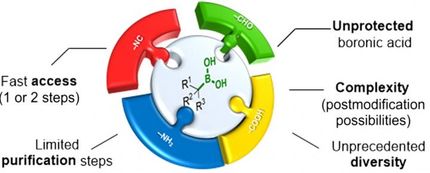Scientists come up with faster way to discover antibiotics
Russian biochemists have identified a promising new class of antibiotics. Having studied over 125,000 molecules, they found that 2-pyrazol-1-yl-thiazole derivatives exhibit antibacterial properties. One of the discovered compounds has demonstrated a good activity and low cytotoxicity, and thus can serve as a prototype in further studies.
The development of antibiotics is one of the key discoveries of the 20th century. Today's world is almost unimaginable without them. However, the rise of antibiotic resistance in bacteria -- that is, their acquired ability to withstand the effects of drugs -- creates a constant need for new drugs. New studies may take years and are hence becoming unprofitable for pharmaceutical companies. This is why novel methods for discovering new classes of antibiotic drugs are of the essence.
"The development of new antibacterial drugs designed to overcome the resistance of clinically important bacterial strains has attracted considerable scientific and social interest. However, this process is mostly focused on identifying structural analogues within the already known antibiotic classes," said study co-author Anastasia Aladinskaya, a researcher at the Laboratory of Medical Chemistry and Bioinformatics of the Moscow Institute of Physics and Technology (MIPT). "We, on the contrary, think that discovering new chemotypes is more effective in the search for antibacterial drugs."
Researchers from MIPT and their colleagues from Skoltech, Lomonosov Moscow State University, and the Russian Academy of Sciences Institute of Biochemistry and Genetics in Ufa, devised and applied a semi-automatic analysis method and used a nonresistant strain of the Escherichia coli bacteria as a model organism. The method relies on bacterial activity control and clearly shows the mechanism of action of different compounds. There are a number of ways to kill bacteria. In this study, the scientists looked for either of the two: abnormalities in the bacteria's genetic material -- their DNA -- or protein synthesis inhibition. Given that the method is quite simple and can be automated, the scientists were able to study over 125,000 molecules.
"Together with our colleagues, the MIPT lab performed high-throughput screening of small-molecule libraries to identify structurally diverse compounds with antibacterial activity. The screening platform employs a previously described unique method designed to determine the mechanism of action of an antibiotic drug. In the course of the study, we discovered a class of small molecules -- 2-pyrazol-1-yl-thiazole derivatives -- with the capacity to inhibit a strain of E. coli known as ΔTolC E. coli," Aladinskaya explained. "These research findings are a starting point for further investigation of this chemotype, including its subsequent structural optimization."
The study identified 688 substances with marked antibacterial activity. Thirty-eight molecules sharing the 2-pyrazol-1-yl-thiazole scaffold were found to be highly active against ΔTolC E. coli, indicating the potential value of this class of compounds. Interestingly, it was the first time this property was ever observed. As a result, the scientists selected eight compounds that inhibited protein synthesis and measured their toxicity to cells. One of the compounds had an optimal balance between its cytostatic and antibacterial properties.
Thanks to the new method, which enables rapid and effective screening of vast numbers of substances, a novel class of compounds with antibacterial activity was identified. Plans are underway to study their properties against antibiotic-resistant strains.






















































